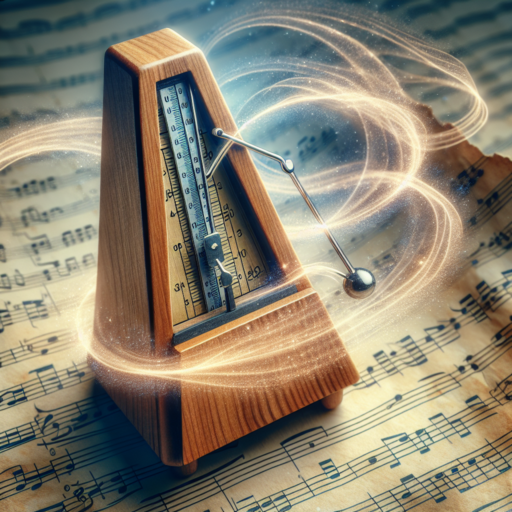What are the benefits of a metronome?
Using a metronome, a device designed to keep a steady tempo while practicing music, offers a plethora of advantages for musicians, from beginners to professionals. One of the primary benefits of a metronome is its role in developing timing and rhythm. Musicians often use metronomes to maintain a consistent pace, ensuring each note is played at the correct interval. This is crucial for playing alongside other musicians and for achieving a polished, cohesive sound.
Additionally, metronomes are instrumental in improving a musician’s speed and accuracy. By gradually increasing the tempo, players can enhance their ability to play fast passages more cleanly and with greater precision. This methodical approach allows for focused practice on difficult sections, promoting muscle memory and reducing the likelihood of errors during performances.
Another significant advantage is the development of endurance. Continuous practice with a metronome pushes musicians to play for longer periods at a consistent tempo, thereby enhancing their stamina. This is particularly beneficial for performers who engage in lengthy concerts or recording sessions, where maintaining energy and concentration is essential.
When should you use a metronome?
Using a metronome, a device that produces an audible click or other sound at a regular interval, can significantly improve your musical timing and rhythm. Its utility isn’t limited to beginners; even seasoned musicians turn to metronomes for various reasons. Understanding the appropriate situations to integrate a metronome into your practice is pivotal for your growth as a musician.
Practicing Difficult Passages
One of the primary scenarios when you should consider using a metronome is while practicing challenging segments of music. Whether it’s a rapid scale, a complex rhythm, or a piece that changes tempo, a metronome can help you maintain a consistent speed. Begin slowly, ensuring accuracy and precision, and gradually increase the tempo as you gain confidence and proficiency.
Improving Rhythmic Accuracy
Rhythmic accuracy is fundamental to any musical performance. A metronome provides an external pulse, helping musicians internalize a steady beat. This is especially crucial during solo practice, where it’s easy to unknowingly speed up or slow down. By playing alongside a metronome, you can enhance your sense of timing, ensuring that you stay on beat throughout a piece.
In the realm of music education and performance, the value of a metronome cannot be overstated. Whether you’re tackling new repertoire, wishing to hone your rhythmic skills, or needing to synchronize with other musicians, employing a metronome can be a game-changer. Its use fosters discipline and precision, laying the groundwork for a solid musical foundation and exceptional performances.
What was the metronome used for?
The metronome, a device celebrated for its simplicity and efficiency, has served musicians and composers throughout the centuries. Its primary function is to maintain a consistent tempo or speed of music. By producing a regular, metrical tick sound at selectable beats per minute, the metronome guides the player, ensuring their performance adheres to the desired pace. This precision in pacing is crucial for both solo practice and ensemble performances, where synchronicity among musicians is fundamental.
In addition to setting a steady tempo, the metronome’s role extends into the realm of practice and skill development. By gradually adjusting the tempo, musicians are able to practice pieces at a slower rate, focusing on accuracy and technique, before incrementally increasing the speed to reach the original tempo of the piece. This methodical approach, often referred to as tempo progression, is especially beneficial for mastering complex passages or integrating new techniques into one’s playing repertoire.
The metronome’s utility is not confined to the realm of rhythm alone. It also aids in developing a musician’s internal timing, promoting a sense of steady beat and rhythmic accuracy that is crucial for musical expression and coherence. Whether for a budding novice or an experienced maestro, the metronome remains an indispensable tool in the journey towards musical excellence.
No se han encontrado productos.
What is the reason for metronome?
The metronome, a device cherished by musicians and educators alike, serves a pivotal role in the realm of music. At its core, the primary reason for a metronome is to instill a sense of timing and rhythm in the user. It accomplishes this by emitting a consistent beat at selectable intervals, allowing individuals to maintain a steady tempo throughout their musical performances or practice sessions. This fundamental aspect of the metronome aids in the development of a musician’s internal sense of rhythm, which is crucial for mastering any musical piece.
Moreover, the metronome’s significance extends beyond mere tempo regulation. It also acts as a valuable tool for improving a musician’s timing accuracy. By practicing with a metronome, musicians can fine-tune their synchronization with the beat, ensuring that each note is played at the correct moment. This process not only enhances their performance quality but also fosters a deeper understanding of the musical structure and timing nuances within compositions.
In addition to timing and accuracy, the metronome is instrumental in helping musicians tackle challenging pieces at a manageable pace. By gradually increasing the metronome’s tempo, musicians can slowly build their skill level and adapt to the demands of faster or more rhythmically complex pieces without sacrificing precision. This step-by-step approach is particularly effective in mastering passages that require a high degree of technical proficiency.




